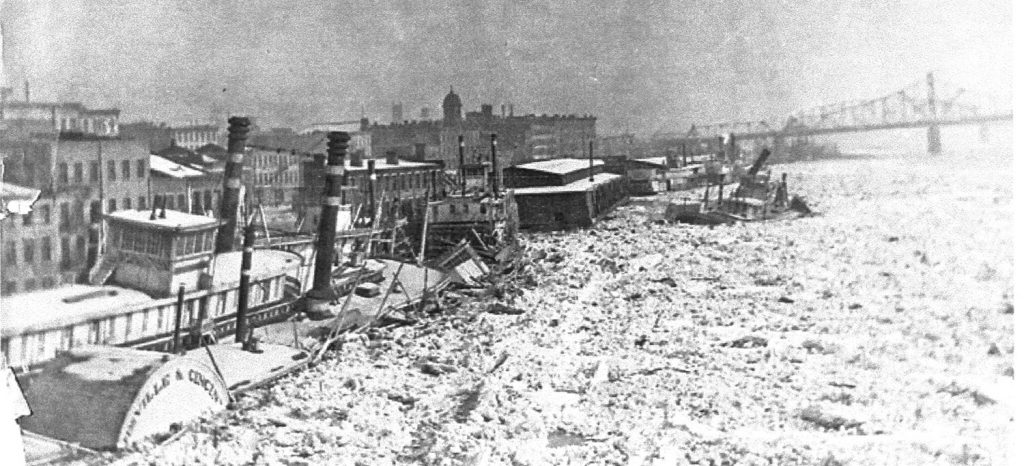The Ohio River Ice Of 1918

With much of the nation in winter’s icy grip, it seems appropriate for the Old Boat Column to observe the centennial of the great Ohio River ice gorge.
Unlike the Upper Mississippi River, where, due to special harbors, coves and other places of safety, mariners in those frigid climates take adverse conditions in stride, the Ohio River has never been well equipped to handle it; this was especially true in the days of the steamboats.
According to records, one of the most severe ice blockages on the Ohio occurred in the mid-1850s, when the river solidly froze and halted traffic for 57 days. As most river historians concur, the worst ice situation of all time happened in the early winter of 1918. At that time, wood was still the dominant material used in hull construction. The razor-sharp ice literally sawed off hulls at the waterline; it then piled up on the main deck, either sinking the boat from the excessive weight and/or crushing the upper works.
At Paducah, Ky., the mouth of the Tennessee River was known as the Duck’s Nest. That portion of the waterway seldom froze over and was long used as a place of safety. However, during that catastrophic winter, it too, froze over and the ensuing gorge spelled the doom of six steamboats, most of them large sidewheelers owned by the Eagle Packet Company of St. Louis. There were problems at other locations as well; the little sternwheel packet Helen E. broke loose from its mooring on the Kanawha River and floated, unscathed, all the way down the Ohio to Madison, Ind. The Princess, an excursion boat owned by the Coney Island Company, broke loose and was crushed in the mouth of the Kentucky River at Carrollton, Ky. The Island Queen (first) which was tied alongside the Princess, broke free, jammed against the Indiana shore and later drifted some 10 miles to Madison where it was rescued, suffering only minimal damage. A total of 36 vessels were either sunk or destroyed.
This week, we feature an image of the devastation wrought by the ice along the Cincinnati waterfront. In the foreground at the left is the big sidewheeler City of Cincinnati. An 1899 product of the Howard Shipyard, the hull measured 300 feet in length by 38 feet in width. Six boilers supplied steam to the engines (26-inch cylinders with 10-foot stroke) that were recycled from the Anchor Liner City of Hickman. The whistle previously saw service on the Telegraph, but after 1907 the boat used the whistle formerly on the Bonanza. Owned by the Louisville & Cincinnati Packet Company, the City of Cincinnati was long under the command of Capt. Jack Lindenburn, with Baylor Spratt serving as chief engineer and William Lepper presiding over the purser’s office. The well-proportioned packet, built for a contract cost of $40,000, teamed with the City of Louisville (built by Howard in 1894) to run between the two cities and making popular meet-the-boat trips.
Both the City of Cincinnati and City of Louisville were crushed like eggshells a century ago this week on January 30, 1918.



